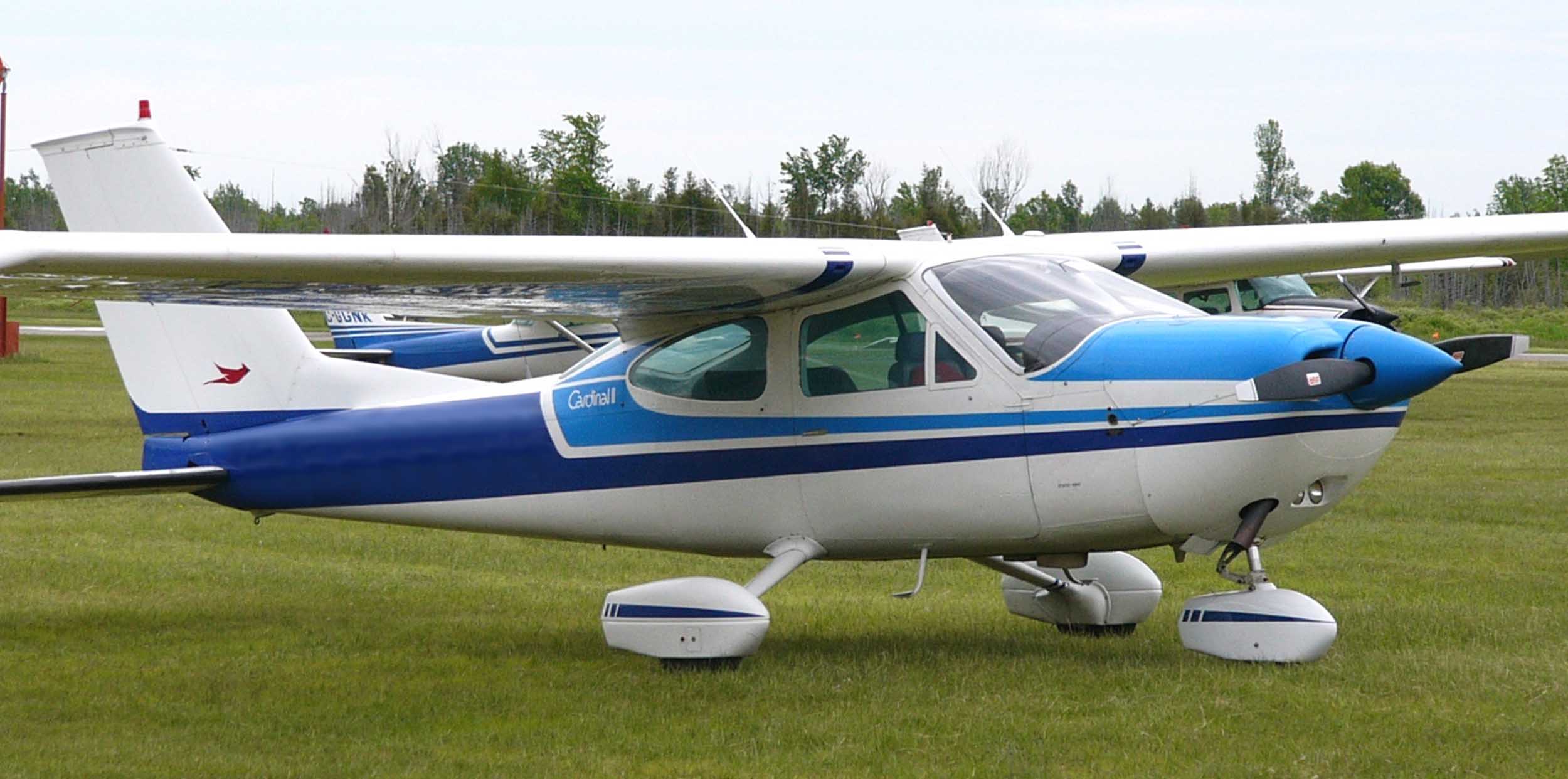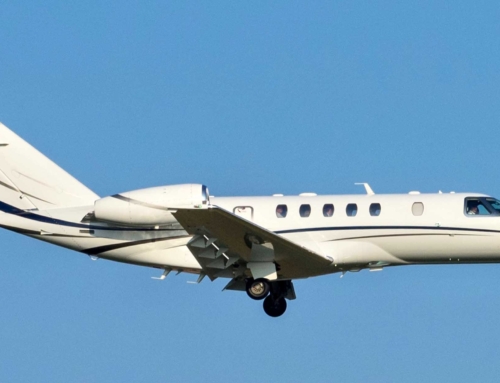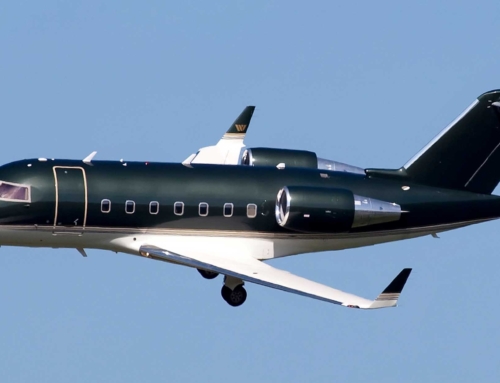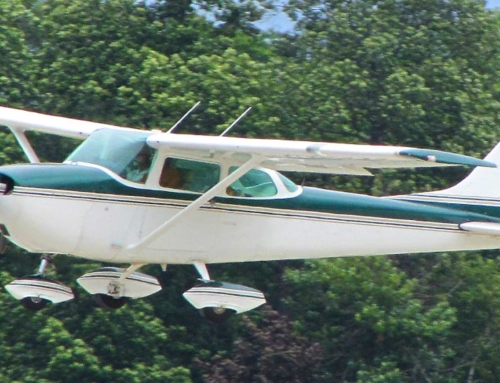Before creating his own initial aircraft, Cessna’s founder Clyde V. Cessna made his first appearance at an airshow in 1911. It was there that he quickly became interested in designing and producing aircraft. With experience as a mechanic and auto salesman, Clyde put together his aircraft with a kit from Queens Airplane Company in the Bronx. Over time, Clyde became a fairly good pilot.
In 1916, Clyde got the opportunity to use a space for his aircraft dreams rent-free on one condition – any new aircraft he made had to have the name of a particular car model called “Jones-Six” painted on the underside of its wings.
In 1917, he built the Comet. However, World War I impacted his vision, halting sales and production altogether as most critical parts and supplies became essential for war use. After coming to terms with his failed venture, he returned to farming.
Years later, in 1925, wealthy businessmen Walter Beech and Lloyd Stearman offered Cessna an opportunity to build and produce more aircraft. After teaming up, they created Travel Air Manufacturing Company with Cessna as its president. But Cessna didn’t enjoy his role as president and missed being heavily involved with aircraft design and production. So two years later, Cessna teamed up with Victor Roos to create the Cessna-Roos Company. His partner Roos left the business shortly after for another job.
Cessna had successful sales through the business’s A and D series, but tough times were still ahead. After private aircraft sales fell to an all-time low in 1931, Cessna closed his company again.
By 1933, Cessna’s nephew Dwane Wallace obtained his degree in Aeronautical Engineering from Wichita University. He eventually worked for Beech Aircraft Company, where he convinced executives to allow his uncle to reopen his shop and continue making aircraft. At the time, Beech occupied a small section of Cessna’s former factory.
After Cessna’s retirement in 1936, he allowed the sale of all of his shares to his nephews, Dwane and Dwight Wallace. Under the Wallace Brothers’ leadership, Cessna designed and built its first twin-engine aircraft in 1938. Before World War II started, government demands from the U.S. and Canada poured in for aircraft to be used for military training. From there, Cessna’s business expanded quickly, embracing its newfound success.
Creating The Cardinal
Driven by a need to create a higher-performing 172, Cessna’s engineers began working on the 177 in the 1960s, later producing the first 177. While it had a sleek new look, aviation enthusiasts and pilots had issues with its speed and strength. Additionally, nearly every aircraft that launched at Cessna’s Delivery Center showed signs of stability issues right away. Even though the issue was solved later, the massive error wouldn’t soon be forgotten. In fact, of the initial 1,100 aircraft sold, less than 100 were reordered.
Cessna began working on a faster, improved 177 with the 177A in 1969. Powered with a 180-horsepower Lycoming O-360-E2D engine, the 177A still spent the next 10 years struggling with sales from and beyond the release of the 177B. However, Cessna’s development of the 177RG redeemed its namesake by increasing its speed with a 200-horsepower IO-360 engine, with the ability to rival the Piper Arrow and Mooney Ranger in the early 1970s.
-
Country of Origin: America
Cessna Cardinal 177 A/B
Below are the average statistics for the latest Cessna Cardinal 177 A and 177 B models. Find more information on Cessna’s Cardinal series by joining VREF Online.
Cessna Cardinal 177 A Statistics
|
157 kts Maximum Speed |
410 nm Maximum Range |
4 Maximum Occupants |
1969 Range Of Years Manufactured |
|
2,752 Total Aircraft Build |
1,553 Current Operational Aircraft |
1,010 lbs Useful Load |
$82,407 Average Sale Value |
|
Unknown Average Days On Market For Sale |
Visit VREF Online VREF Demand Rating |
Cessna Cardinal 177 B Statistics
|
139 kts Maximum Speed |
490 nm Maximum Range |
4 Maximum Occupants |
1970-1978 Range Of Years Manufactured |
|
2,752 Total Aircraft Build |
1,553 Current Operational Aircraft |
967 lbs. Useful Load |
$156,073 Average Sale Value |
|
165 Average Days On Market For Sale |
Operational Resources
Operations Manual
Maintenance Document
Local Resources
- Textron Aviation Inc. (Domestic and International Service Centers)
- Cessna Flyer Association
Manufacturer
Insurance
- Avemco
- AOPA Insurance
- BWI Aviation Insurance
- Falcon Aviation Insurance
- Travers Aviation Insurance
- USAA Aircraft Insurance For Pilots
Cessna Cardinal 177 A/B Details
The following is information about the latest Cessna Cardinal 177 A/B.
Interior
177A
Cessna’s 177A features a spacious back seat, more headroom, cigarette lighters, and signature red-accented panel control. It has a distinctly modern style called “fastback”, which Cessna’s marketing used in attention-grabbing headlines like “The Fastback Revolution”.
177B
Cessna’s 177B features built-in lumbar seating designed with its contouring suspension system and optional adjustability features. This variation also has a separate baggage compartment and a T-style avionics panel.
Exterior
177A
This variation showcases a 180 horsepower increase while slots were added to the stabilator to improve landing. This variation is known for its wraparound windshields for ideal visibility, sharp leading-edge wings, and heavier nose design.
177B
Wings on the later 177 series include a more blunt design to improve takeoff. This variation also has improved door sealing, optional 60-gallon fuel tanks, a 28-volt electrical system, a D-engine model update, and upgraded prop for higher continuous revolutions per minute (rpm).
Avionics
177A
- PS Engineering PMA 7000B-T Audio Panel/Intercom System (Bluetooth)
- Dual King KX 170B Navigation/Communications
- Dual Glideslopes
- King KCS 55A Compass System
- L3 Lynx NGT-9000 Multilink ADS-B In/Out Transponder with traffic display
- Northstar GPS-60 Navigator
- Davtron digital clock
- King KR 87 ADF
- King KN 64 DME
- Cessna 300 A Autopilot with ST-60 Altitude Hold, Vertical Speed, and Glideslope Coupling
- Eventide Argus 5000 Moving Map
- WX-10A Stormscope
- Shadin Digital Fuel Flow/Totalizer
- Electronics International UBG-16 Engine Analyzer with Burst Recorder
- Precise Flight Standby Vacuum System
- Pulselight Landing and Taxi Light System
177B
- Garmin 3X GDU PFD Touch
- Garmin G-5 Standby
- Garmin GTN-750Txi
- Garmin GTR 225 Navigation/Communications
- Garmin GNX375 GPS WAAS ADS-B in and out
- Garmin GAD 29B
- Garmin GSU 25D ADAHRS
- Garmin GMA 340 Audio Panel
- Garmin GFC 500 Autopilot System
Specifications
177A
- Take Off Run (50 ft.): 1,575 ft.
- Configuration: Single Engine, Piston, Fixed Gear
- Max Seats: 4
- Max Take-Off Weight: 2,500 lbs.
- Cruise: 130 kts
- Range: 535 nm
- Take Off Run: 750 ft.
- Landing Roll: 600 ft.
- Wing Span: 35 ft. 6 in.
- Length: 27 ft. 3 in.
- Height: 8 ft. 7 in.
177B
- Take Off Run (50 ft.): 1,575 ft.
- Configuration: Single Engine, Piston, Fixed Gear
- Max Seats: 4
- Max Take-Off Weight: 2,500 lbs.
- Cruise: 130 kts
- Range: 535 nm
- Take Off Run: 750 ft.
- Landing Roll: 600 ft.
- Wing Span: 35 ft. 6 in.
- Length: 27 ft. 3 in.
- Height: 8 ft. 7 in.
Cessna Cardinal Models
177
In the mid-1960s, Cessna engineers sought to create a more modern version of the ever-famous 172. As a result, the original 177 went into production as a high-wing single-engine aircraft in late 1967 with a horsepower of 150.
177A
Because the 177 was deemed an “underpowered” model, Cessna made adjustments. And in 1969, Cessna’s 177A appeared with an all-inclusive price of $16,995 and a power increase to 180 horsepower. This variation has a four-cylinder Lycoming O-360 engine with an improved cruise speed of 11 knots.
177B
In 1970, Cessna welcomed the 177B into its 177 series. Major updates include a refreshed wing airfoil and a new constant-speed propeller. Cessna introduces a luxury version of the 177B in 1978 with leather upholstery, a table for the rear passengers, and a 28-volt electrical system.
177RG
The final 177 of the series introduced in 1970 is a retractable-gear 177RG Cardinal RG. Major changes from the 177B include a retractable nose-wheel and main wheels, with the nose-wheel enclosed by doors when pulled in. This variation is powered by a 200-horsepower Lycoming IO-360 engine and increased in maximum weight by 300 lbs. Cruise speed increased from the 177B by 148 knots.
Top Cessna Cardinal Questions
Check out FAQs about Cessna’s Cardinal.
Is Cessna Cardinal A Good Plane?
Cessna’s first of the 177 Cardinal series is known to be a slower aircraft with a decent but not tremendously exceptional range. After fixing notable issues, Cessna ended up with a decent plane in the 177RG. Outside of the 177, Cessna continues to see tremendous success selling its 172 and newer aircraft models.
How Much Is A Cessna Cardinal?
The cost of a Cessna Cardinal depends on the version. The estimated price for the 177 series according to its latest variation:
- 177 – $101,060
- 177A – $82,407
- 177B – $156,073
- 177RG – $153,266
Join VREF Online to keep an eye on future estimated aircraft prices.
How Fast Is A Cessna Cardinal RG?
A Cardinal RG has a maximum cruise speed of 180 mph or 156 kts. However, the recommended cruise speed is 171 mph or 148 kts.
Are There Any Incidents On The Cardinal’s Record?
According to the Aviation Safety Network’s database, 554 occurrences are on record. Of these incidents, 4 are notable – taking place from 1968 to 2003.
The grandson of a former U.S. Vice President, Alben Truitt, hijacked a 177 from Key West to Cuba in 1968, returning the aircraft nearly 4 months later. He was then charged with 40 combined years in prison for aircraft piracy and kidnapping.
In 1996, 7-year-old Jessica Dubroff, her certified flight instructor and father, took off in a 177B in an attempt to set a cross-country record for young pilots. However, the plane crashed after takeoff in Cheyenne, Wyoming killing everyone on board.
In 1998, a single pilot was flying a 177RG when it collided with another aircraft that had traveled off course with 14 people on board. Both aircraft crashed into Quiberon Bay off the coast of France, resulting in complete fatalities for everyone on board.
The young author of Wonder When You’ll Miss Me, Amanda Davis, and her parents crashed in a 177 shortly after takeoff. Amanda’s father, who was also chairman of the neurology department at Long Island’s Stony Brook University, was piloting the plane. According to news outlets, he lost control of the aircraft after he reported bad weather. This caused the 177 to crash into the mountainside, killing all on board.
Why Was The First Cardinal Engine A Failure?
The AOPA cites the Cardinal’s first engine as a misstep in design and manufacturing. The engine for this aircraft was too slow, which caused problems during takeoff and landing. One more specific problem initially reported is pilot-induced oscillation (PIO) or porpoising, which causes the aircraft to switch between upper and lower movements. It’s a control issue that Cessna fixed quickly with the launch of the 177A model.
Does Cessna Still Make The Cardinal?
Cessna ceased producing the Cardinal in 1978. While it was intended to replace the Cessna 172 Skyhawk, it was not successful. Even with its latest 177RG variation, sales slowed significantly. Only about 100 177s were made within its last year of production.
Join VREF Online For More About Cessna’s Cardinal Series
Join VREF Online for real-time data on thousands of single-engine aircraft, their turbocharged counterparts, and much more.







